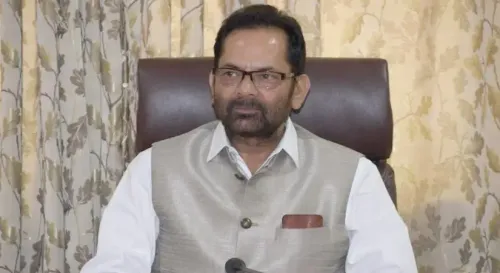Is Kerala Considering a Review Petition After Supreme Court's Decision on New Schools?

Synopsis
Key Takeaways
- Kerala's literacy rate stands at 100%, the highest in India.
- The state has nearly 16,000 schools for a population of around 3.5 million.
- Kerala has a near-zero dropout rate, ensuring educational access for every child.
- The government focuses on quality education rather than just the quantity of schools.
- Kerala is recognized for its strong educational infrastructure and teacher training programs.
Thiruvananthapuram, Nov 26 (NationPress) The Kerala government is currently reviewing the Supreme Court's directive that requires the establishment of lower primary (LP) and upper primary (UP) schools in areas lacking such educational institutions, as mandated by the Right to Education Act, according to state Education Minister V. Sivankutty on Wednesday.
While the state government has expressed its respect for the ruling concerning the establishment of a school in Elambra, Malappuram, it is considering the possibility of filing a review petition after thoroughly evaluating the practicality and implications of the decision.
Officials noted that the educational scenario in Kerala is markedly different from that in northern regions of the country.
According to data from the National Statistical Office and NITI Aayog, Kerala is at the forefront of literacy in India, boasting a literacy rate of 100%, which is significantly higher than the national average.
Most residential areas in the state have either government or aided schools located within a 1–2 km radius, ensuring no child misses out on education due to a lack of nearby institutions.
“One of Kerala’s remarkable accomplishments is its nearly zero dropout rate, a clear divergence from many other states. The government emphasizes that education in Kerala is not merely quantified by the number of schools, but by parameters such as quality, accessibility, and the overall learning environment. Currently, the state boasts nearly 16,000 schools serving a population of around 3.5 million, a stark contrast to states like Uttar Pradesh, which has over 250,000 schools but faces significant overcrowding due to its vast population,” stated Sivankutty.
In a similar vein, Bihar, which has a population exceeding 130 million, operates roughly 93,000 schools, resulting in congested classrooms. In contrast, Kerala focuses on personalized attention, robust infrastructure, and favorable teacher-to-student ratios.
Kerala consistently ranks among the top states in the Performance Grading Index (PGI) released by the Union Ministry of Education, which assesses states based on learning outcomes, equity, facilities, and teaching quality.
Together with states like Punjab and Chandigarh, Kerala excels in literacy rates, teacher training, and educational infrastructure.
“The government reaffirmed its commitment to effectively implementing the Right to Education Act, stressing that any expansion must be approached scientifically and sustainably. Rather than merely increasing the number of schools, the focus is on enhancing existing institutions to meet international standards, thus maintaining Kerala as a national benchmark in school education,” Sivankutty concluded.









